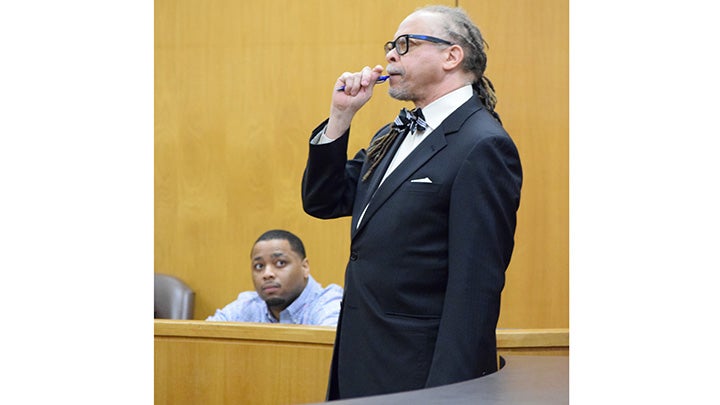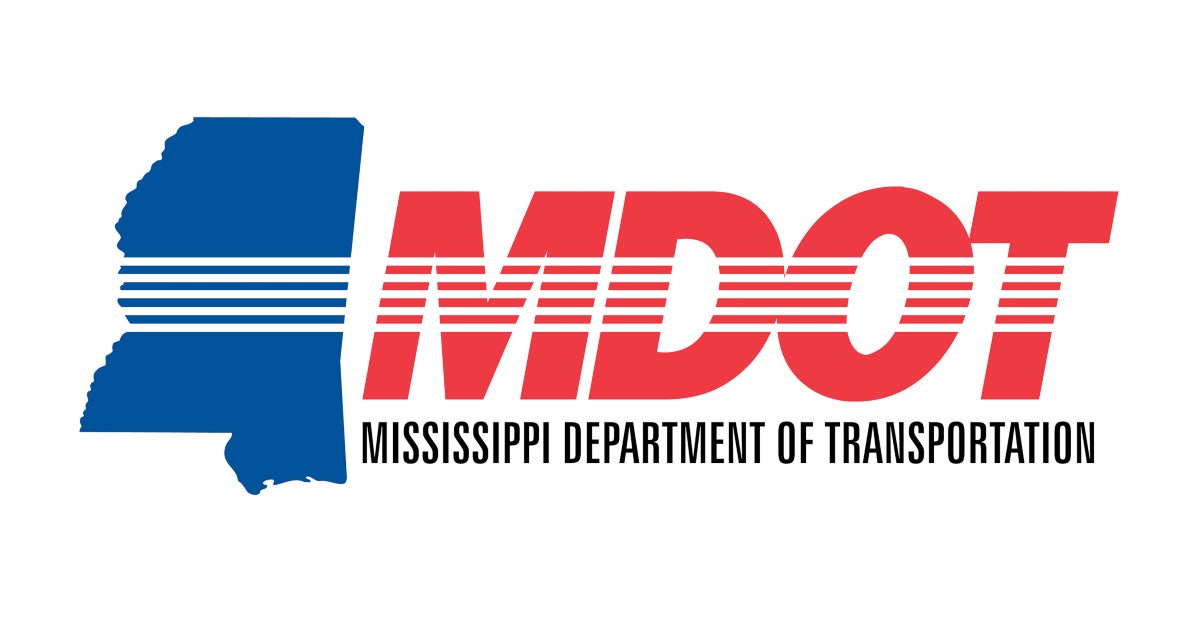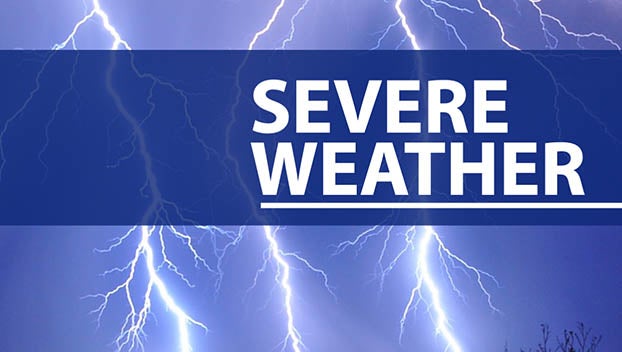Bell: ‘He was gonna shoot me’ — Defendant explains his side of fatal shooting, prosecutors hit back hard
Published 10:00 pm Thursday, April 5, 2018

- Photo by Adam Northam Defense attorney Imhotep Alkebu-lan speaks before the court on Thursday. Defendant Cordarryl Bell took the stand during the day’s proceedings, testifying, “I felt like if I didn’t shoot him, he was gonna shoot me.”
Cordarryl Bell took the witness stand in his own murder trial Thursday, telling the court he fired 11 shots at Aquarius Nelson because he believed he had to kill or be killed in their brief confrontation at a home in Brookhaven 28 months ago.
With defense attorney Imhotep Alkebu-lan guiding his testimony, Bell explained how on Nov. 2, 2015 he watched nervously from the windows at 115 Walnut St. as a white Chrysler 300 drove past four or five times before it stopped at the edge of the property and Nelson got out. Bell said he believed Nelson had come to kill him, so he greeted him at the kitchen door with pistol drawn.
“I told Aquarius to get back. He turned around to walk away, and I seen him motion like he was reaching for a gun, and when he turned I started firing,” Bell said. “I felt like if I didn’t shoot him, he was gonna shoot me.”
Bell disputed the Wednesday testimony of Joshua Cole, who was questioned by police after driving Nelson, who was his cousin, to the hospital with four gunshot wounds, saying Cole’s older brother, Calvin Haynes, was behind the wheel when the shooting occurred. The defendant said he shot at the car because he believed the driver, too, might have been there to kill him.
Bell said he feared for his life after being shot at the previous day by Lattrick Williams — a suspect in an armed robbery at State Bank on Aug. 31, 2017 who may have escaped police in a high-speed pursuit earlier this year. Bell said Williams fired at him believing he had shot at Christopher Stringer — the other suspect wanted in connection with the high-speed chase. Bell said he’d known Nelson for 15 years and never had an issue with him or the Nelson family, but feared Nelson was coming to kill him on Nov. 2 because of his close friendship with Williams.
But Assistant District Attorney Brendon Adams unleashed a fierce line of questioning against Bell’s story, tripping up the defendant on several points and even causing him to dispute the testimony of forensic scientists.
“You feared retaliation, so that’s why you were out riding around the next day?” Adams asked after Bell testified he had hitched a ride to the home on Walnut Street. “Why did you leave your house if you were paranoid somebody was looking for you?”
After a long pause, Bell stated he didn’t have a reason.
Adams went on to poke more holes in Bell’s fear defense, asking why he opened the door to confront Nelson before Nelson had a chance to knock and why he didn’t just avoid the door or flee out the back of the house.
“Your car wasn’t there. There was nothing there to indicate you were inside. There wasn’t a sign out front that said ‘Cordarryl Bell is in here,’” Adams said.
He also forced Bell to admit he never saw a weapon on Nelson or whoever was driving the Chrysler, and got in a particularly sharp jibe when Bell said he did not flee the house because he feared he would be gunned down if he ran.
“By a man you didn’t know had a gun?” Adams asked.
After Bell stepped down, Brookhaven Police Department Capt. Clint Earls made a second appearance on the stand for a brief addition to his testimony before the defense rested and Circuit Judge Michael Taylor took both legal teams to chambers for procedural discussions. The trial was recessed for the day just before 4:30 p.m., with closing arguments and jury deliberation scheduled for today.
Before Bell’s testimony, the previous several hours of the trial were taken up by four other witnesses — Joshua Cole, who drove Nelson to the hospital; Andrew Fortson, a friend of Bell who lived in the house at 115 Walnut St. in 2015; Todd May, a neighbor from a few doors down who saw Bell entering the woods after the shooting occurred; and Mark Levaughn, the chief medical examiner at the state crime lab who performed Nelson’s autopsy.
Cole testified he and Nelson intended to meet with Williams on Nov. 2, 2015, but missed him and instead headed to the house on Walnut Street because Fortson owed Nelson money. He said the reason they circled the neighborhood several times in the white Chrysler was because Nelson couldn’t remember which house was Fortson’s.
Cole said he remained in the driver’s seat while Nelson went to the door, but Bell “flung open” the door with gun in-hand.
“I could see the bullets start hitting the ground,” he said. “I ducked down up in the car because I heard a bullet hit the car. (When Nelson made it into the car) he was holding his chest and he told me had had been hit. He told me Cordarryl Bell was the one who shot him.”
Cole testified he drove straight for KDMC with the bleeding Nelson, who said he couldn’t breathe.
Alkebu-lan softened Cole’s testimony in cross-examination, getting the witness to admit he heard Bell tell Nelson to get back twice when they met at the kitchen door and that Nelson at first refused to do so. In one of the trial’s more dramatic moments, the attorney tried to demonstrate Bell’s fear for his life by questioning Cole about the number of shots fired.
“Cordarryl Bell opened fire. Was it one time?” Alkebu-lan asked. “Was it two times? Was it three times?”
With Cole answering “no sir” between each question, Alkebu-lan continued all the way to 10 before the witness said he wasn’t sure. Cole also testified he did not know Earls and that he gave his statement at KDMC to officer Lisa Jackson, despite Earls’ testimony he spoke with Cole briefly before turning him over to BPD detective Penny Banks.
Backing up Bell’s claim Haynes drove the Chrysler instead of Cole, Alkebu-lan asked Cole if he and Nelson first drove back to Nelson’s nearby house on East Independence to dispose of weapons and other evidence before continuing on to the hospital. Alkebu-lan asked Cole how someone at that address could have known to make a 911 call on Nelson’s behalf.
Toward the end of the day, Alkebu-lan considered entering audio of the 911 call into evidence but eventually decided not to. The prosecution announced they would object to playing the call in the courtroom, but did not deny the call was made.
Fortson was next on the stand, testifying Bell often stayed at his home at 115 Walnut St. His testimony was the strongest yet for Bell’s self-defense claim.
“(Bell) showed up at the house acting a little more nervous and agitated than normal. Periodically he was making rounds through the house, peeking out the windows,” Fortson told prosecutors. “He made a couple of phone calls and said someone was looking for him. After that, I heard the kitchen door open and a loud voice said ‘stop,’ then ‘get back.’ Then a bunch of rounds were fired. I hit the floor in my living room, just laid down flat.”
Alkebu-lan’s line of questioning to Fortson heavily contradicted Cole’s previous testimony. Fortson said he never knew Nelson and didn’t owe him money, adding there was no reason for Nelson to be coming to see him. Recalling a taped interview with police in 2016, Fortson told the attorney Bell’s phone calls before the shooting were to let someone know he was in danger.
Adams tried to get Nelson to testify Bell had options for fleeing rather than fighting when Nelson arrived, but his attempts largely fell flat.
May’s testimony was one of the shortest of the day. He told the court he had noticed the white Chrysler circling the neighborhood “pretty much all day” and saw it again “flying” on its way to the hospital after he returned to his home on Walnut Street after picking up his son from school. May also testified he came into contact with Bell crossing his neighbor’s yard and entering the woods after the shooting.
“I told him not to be ‘a lookin’ this way — keep on walking,” May said. “He kept on walking.”
Alkebu-lan scored some points off May’s testimony when he got him to admit the Chrysler’s circling of the neighborhood was not strange.
“It wasn’t normal for that car to be making that block like that,” May said. “That’s why I was kindly watching it and paying attention.”
After May was dismissed, the two sides conferenced with the judge over the admission of photographs of Nelson’s autopsy. Alkebu-lan was fine with five of the six photos, but objected to the admission of the sixth — a photo of Nelson’s body with a metal rod running through a bullet channel to show the direction of the shot. Alkebu-lan said the photo would inflame the minds of the jury, but Taylor allowed all six photos over the objection.
The photos were part of Levaughn’s testimony. He used them to describe the four gunshot wounds Nelson sustained — a grazing wound to the right cheek, a pass-through of the right wrist and two pass-through wounds that entered his back. One entered high and to the right, exiting under his right arm, while the fatal shot entered low on the left side, lancing through Nelson’s left lung and liver before exiting out the right side of his chest.
Levaughn’s expert testimony may have been the most damning to Bell’s self-defense case, as he classified three of the wounds as defensive in nature. The bullet direction could not be determined on the grazing wound.
“To me, that’s a defensive or evasive posture. His back would be presented to the weapon,” the examiner said.
Alkebu-lan tried to use Nelson’s toxicology report to paint the deceased in a bad light for the jury. The report showed the presence of marijuana and methamphetamines in Nelson’s blood, but Levaughn testified he considered the amount of methamphetamines recorded to be low.
The state rested its case at 2:13 p.m. Alkebu-lan immediately made a motion the court instruct the jury to return a verdict of not guilty, saying the state had not proven Nelson was not killed in self-defense.
“It has not been proven beyond a reasonable doubt he went over there to kill Cordarryl Bell,” Alkebu-lan argued. “Joshua Cole told a tale of going over to Mr. Fortson’s house to collect a debt, and we know from Mr. Fortson’s testimony he didn’t even know Mr. Nelson. That motive for him being there on Walnut Street was refuted.”
Adams argued the state had met its burden of proof and there is no evidence of self-defense.
“There is no need to show self-defense, there is a need for the state to disprove Mr. Bell shot in self-defense,” Alkebu-lan said.
Taylor overruled the motion for a directed verdict and Alkebu-lan put Bell on the stand. At the end of the day, both sides joined Taylor in chamber to argue jury instructions. Closing arguments for what should be the trial’s final day begin at 9 a.m. today.





